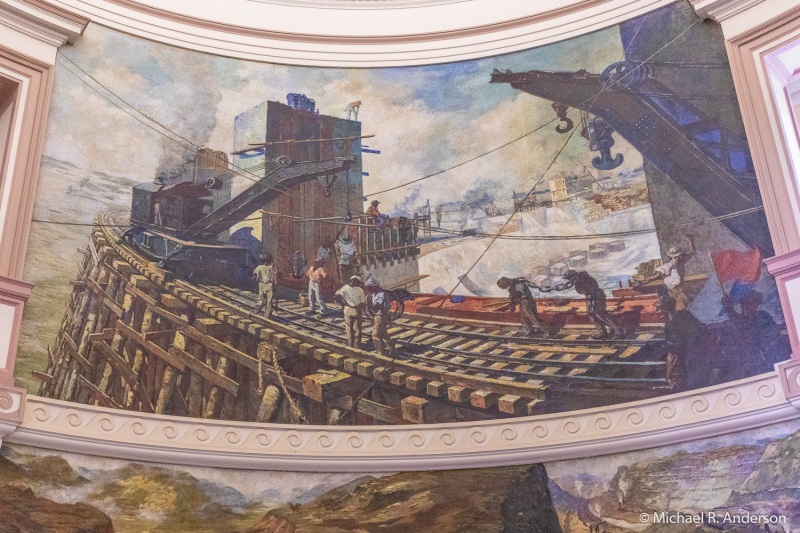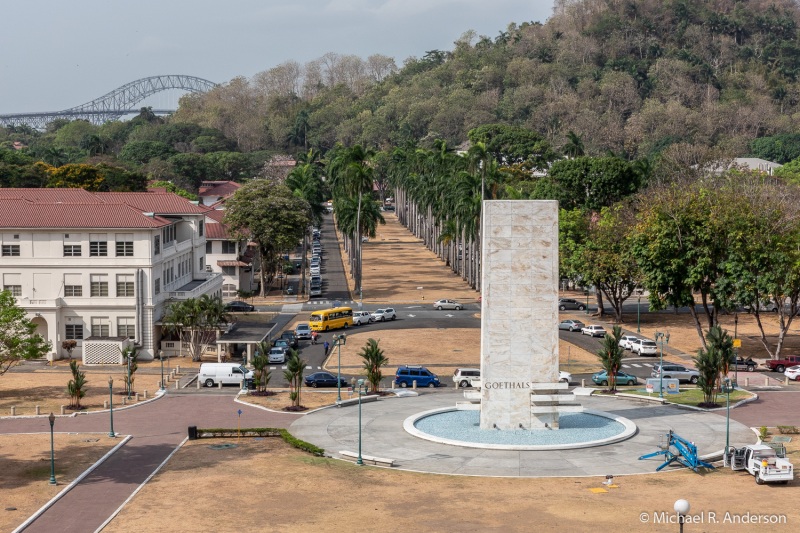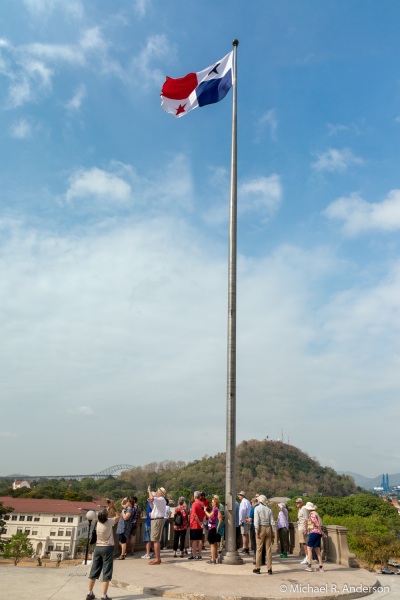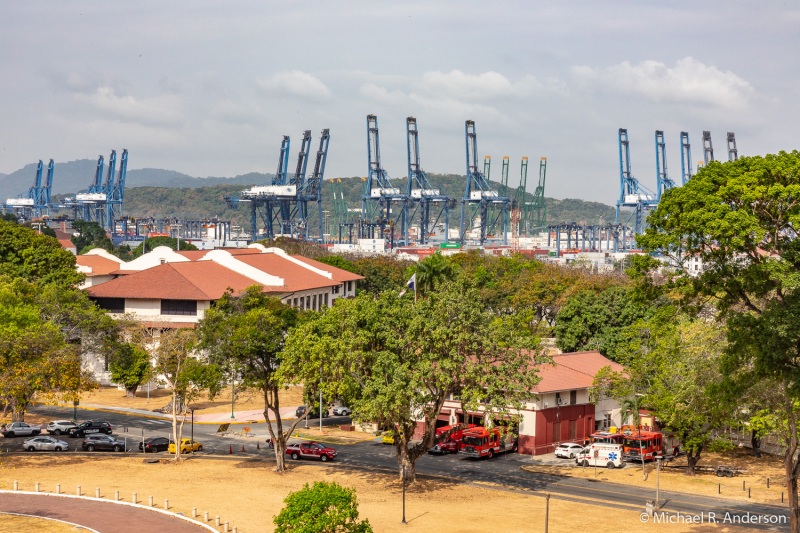The second day of the tour began with another bus ride to several historic sites. The first stop was at the Panama Canal Administration Building where we viewed a rotunda filled with paintings documenting canal construction. Behind the building we could see the marble Monument honoring George Washington Goethals, the man who headed the U.S. canal construction. In the distance the container cranes used to load vessels in the Port of Balboa stood out like a blue steel forest.
Our next stop had more to do with biology than history. Since some of the upcoming stops would not have restrooms, we stopped at a large grocery store where we had about 20 minutes to use the restrooms and/or shop. Many of the members of our group eagerly asked our guides if they could recommend some local liquor. So, our first stop was the liquor aisle. While there we spotted a reminder of our summer vacations on Washington Island, Wisconsin — bitters! This was not Angostura Bitters, however, so it might not be a valid initiation into the Bitters Club.
Having stocked our supplies, we drove on to visit the Madden Dam. Lake Alajuela, the reservoir behind the dam, is an essential source of water for the operation of the canal. The dam also generates hydroelectric power and supplies drinking water to Panama City.
While heading off to our lunch stop, the bus suddenly stopped, backed up and pulled off the road. The driver had spotted a sloth in the trees. We all climbed out to see it. I should say we tried to see it. Our guide used a laser pointer to show us its location way up in the trees. A number of people either saw it or pretended to see it. My picture shows the tourists, but the dark spots you can see are just dead leaves. I never saw it. Since it was a sloth you know it wasn’t because it ran away. Although I missed the sloth, while at lunch I did spot what I thought was a small alligator. I was told, however, that it was a caiman. It also appeared to be looking for lunch.
We think of the Panama Canal as an American accomplishment, but the French were the first to attempt its construction. They underestimated what would be required to build the canal and they deceived investors, eventually leading to bankruptcy, scandal, and prison sentences. The main obstacle, however, was the mosquito. Over 22,000 people died during the French attempt. Most of the deaths were due to disease, primarily yellow fever and malaria. The Cementerio Frances holds the bodies of many of these victims.
Then we headed off to visit the Miraflores Locks.



